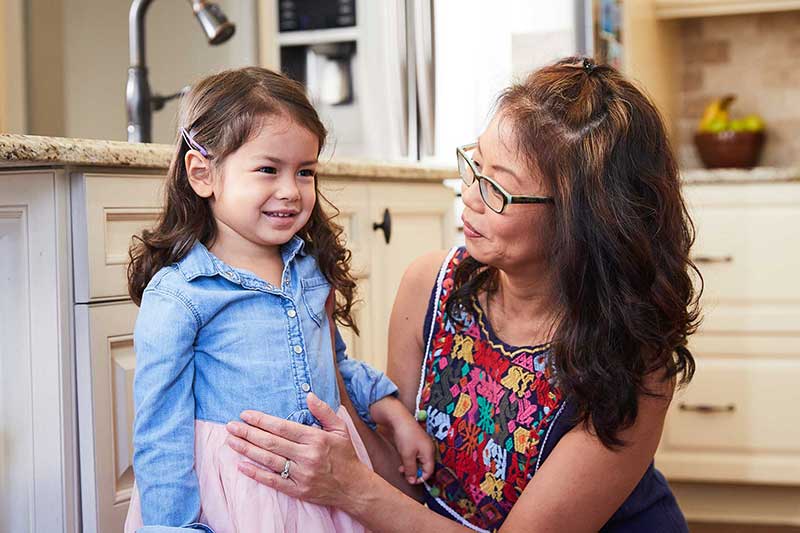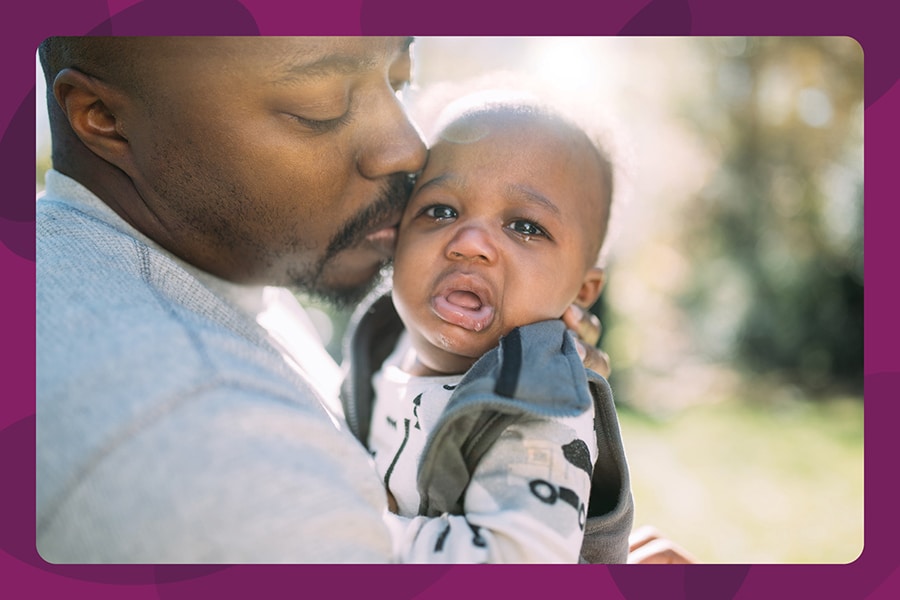What Is Emotional Regulation in Kids and Teens?
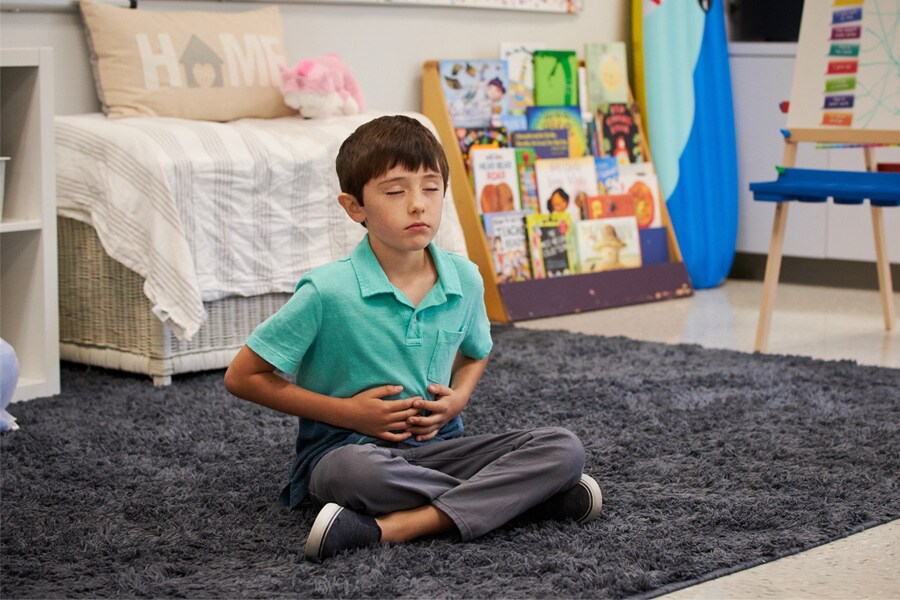
Everyone is born with a range of emotions, but no one is born knowing how to regulate them. As a parent or caregiver, it's natural to want to protect kids from tough feelings. But kids build lifelong emotional regulation skills when they work through hard things, rather than avoiding them. Managing emotions is a lifelong learning process and you can teach your child how to handle their emotions on their own over time.
In this article:
What is emotional regulation?
Emotional regulation is the ability to manage your emotions in a healthy way. Starting at birth, it’s important that we teach and model emotional regulation skills. Kids observe and adopt these skills over time. And the best news is, it’s never too late to start.
We become emotionally regulated when we’re able to recognize, label and express our emotions, then use strategies to cope with them. For example, when your child tells you they’re feeling frustrated because of their homework, so they start taking deep breaths, that is healthy emotional regulation.

Emotional regulation skills start with connection
So how do you teach emotional regulation skills? It all begins with a safe, stable and nurturing relationship. When kids and teens have a trusted adult in their lives, they feel more comfortable expressing their emotions. You can start building that relationship by understanding emotional regulation for kids and its role in parenting.
Emotional regulation is not… |
Emotional regulation is… |
|---|---|
Something you either have or you don’t. |
Something you are taught from a safe, stable and nurturing adult. |
Something you learn once. |
Something that requires intentional practice and reinforcement throughout your life. |
Something older kids don’t need help with. |
Something that requires continued teaching and support. |
Denying or avoiding emotions. |
Identifying, expressing and coping with emotions in healthy ways. |
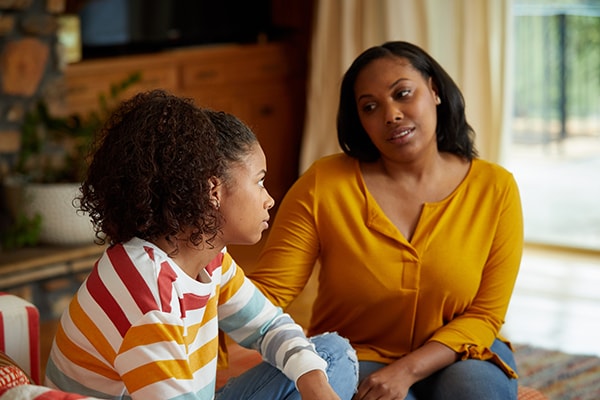
What does emotional regulation look like?
Building emotional regulation skills in kids takes time and looks different depending on age and developmental stage. Here are some ways we can offer support as they grow and develop.
|
Age |
Infancy |
Preschool |
Elementary |
Middle/High |
|---|---|---|---|---|
|
Strategy |
Responsive caregiving |
Normalize and validate feelings |
Use curiosity to encourage emotional expression and coping |
Set the stage for open communication |
|
Example |
When an infant cries, use a soothing voice or gentle rocking to calm them. |
When a child feels “big” emotions, empathize with those feelings while modeling your own calm and coping. |
Respond with, “I wonder if you’re feeling…” or ask, “What might help you feel better right now?”. |
Show active listening by putting away distractions, relaxing your body language, and using open-ended questions to encourage youth communication. (e.g. “How are you feeling?” and “What can I do to help?”). |
The benefits of emotional regulation
As a parent, you want the best for your child, which is why emotional regulation for kids is so important. Even if you don’t see it at first, know the emotional self-regulation skills you’re teaching your kids are making a positive impact. Sure, some kids may have more trouble regulating emotions than others, and that’s OK. But over time, as you reinforce and model those techniques to your child, you’ll begin to see the benefits play out in many ways. Managing emotions impacts many aspects of kids’ lives and who they become. This includes:
- Mental health: Emotional regulation helps you cope with stress, which can also help with navigating mental health disorders, including anxiety and depression.
- Physical health: By effectively managing emotions such as stress, we can reduce physical health risks including heart disease, obesity, diabetes and a weakened immune system.
- Relationships: People who regulate their emotions well are often better at resolving conflicts, expressing their needs and understanding others' emotions. This can lead to better communication and stronger relationships.
- Outlook on life and resilience: We can navigate life's ups and downs better with the ability to regulate our emotions. This leads to increased resilience, as well as a more satisfied, positive outlook on life.
- Academic success: Emotional regulation can lead to better focus, reduced test anxiety and improved performance in school.
- Decision making: When we regulate our emotions effectively, we’re less likely to make impulsive decisions driven by temporary feelings. This can lead to more thoughtful and rational decision-making.
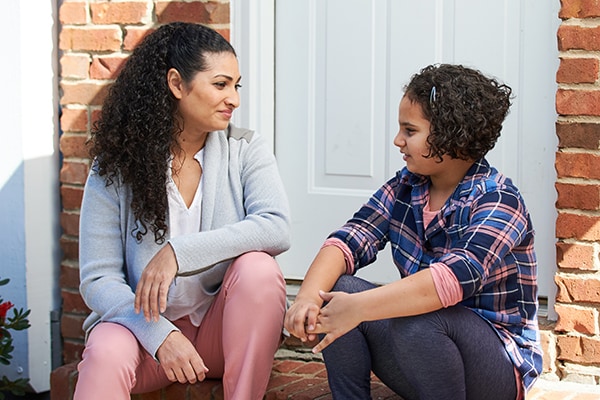
Your role in developing and supporting your child’s emotional regulation
Emotional regulation techniques don’t come to us naturally. They’re a set of skills we must learn and practice over time. While it’s best to start implementing emotional regulation techniques at birth, it’s never too late to teach kids and teens healthy ways to manage their emotions. During infancy, it’s our role to regulate with our children (known as co-regulation), such as rocking them when they cry. Then, as they develop into kids and teens, we can transition from co-regulating toward modeling and actively supporting their healthy regulation.
How to teach kids and teens emotional regulation strategies
- Start by establishing a warm, caring and responsive relationship with your child. It’s never too late to build a safe, stable, nurturing relationship.
- Build a supportive environment where your child feels safe expressing their emotions. This can look like having conversations without judgment or knowing you don’t have all the answers but are willing to listen. Check out our tips on how to effectively communicate with kids and teens from our mental health experts.
- Teach feeling words starting at birth and continue through your child’s development. You can use our printable feelings wheel as a guide, as well as other feelings resources from our mental health experts.
- Teach your kids and teens how to identify their emotions by first teaching them that feelings exist. This starts during infancy and continues throughout childhood. For younger kids this can be done through books and play. Start with the basics (e.g., happy, mad, sad) then, as they develop, teach more advanced words to build their vocabulary.
- Teach your child how to express their emotions by having regular conversations about feelings. Check out our tips for having conversations about feelings, such as asking open-ended questions, using active listening, and normalizing and validating emotions. This creates a sense of safety and reduces shame, which can help with emotional regulation.
- Teach children how to cope with their emotions by modeling different coping skills and putting them into practice. It’s difficult to learn new things when we’re feeling upset, so this is done the best when everyone is calm.
Emotional regulation throughout a child's lifetime
Just like many aspects of parenthood, such as creating routines and healthy habits, implementing emotional regulation skills in a child’s day-to-day life takes patience and repetition. Emotional regulation is not about reaching a state of perfection, but rather about having tools to manage feelings in healthy ways.
While we can’t control every outcome in our kids’ lives, we can control the effort we put into the relationship we’re building with them. When we have a safe, stable and nurturing relationship with a child, we can teach, model and support emotional regulation skills as a child’s safe, trusted adult. We all want the best for our kids—strong relationships, resiliency, academic success, physical wellness, the ability to solve problems, etc. And emotional regulation is the foundation for shaping those important parts of life for kids and teens. When we teach and support emotional regulation starting at birth, we are helping them build resilience and better handle life’s ups and downs as they grow up.


